Fought At Frankfurt
2215 days 23 hours 52 minutes ago
Counterattack at Veckerhagen
100 POINTS4th Motorisierte Division attacks to cut the rail links between Kassel and Hannover. After breaking through weak defenses of the 17th Grenadier Division at Eichenberg, the Division moves northwest to seize crossings over the Weser and ultimately cut the rail line at Grebenstein. British cavalry reconnaissance moves to stop them by protecting the crossing at Veckerhangen, but arrives to late, forcing the cavalry to counterattack the dangerous East German penetration
The battle context is the struggle by NATO to maintain rail communications to Hannover while building up the necessary logistics in Hannover to actually conduct offensive operations beyond local counterattacks. The Frunze Academy reportedly has a plaque that says amateurs talk tactics, professionals study logistics. But switching the center of gravity of logistics operations isn't as easy as it seems. The map depicts the area of the Weser crossings on the right, and the valley beyond where the last rail line north/northeast out of Kassel stretches toward Hannover. A rail line of vital importance.
The 4th Motorisierte had been committed from reserve in the 1st Guards Tank Army as the battle continued to rage around Frankfurt. NATO was counterattacking to preserve the rail line through Kassel to Hannover. Any fool who could look at a map and understood logistics could see the utter futility of trying to supply four NATO Corps through the ports of Cuxhaven and Hamburg when they were within artillery and rocket range of PACT forces in eastern Hamburg and Holstein. Concealed batteries of antiship missiles lay waiting for enemy resupply ships to come into range. Soviet naval aviation flying out of Danish airfields made approaching the coast perilous.
Then came the problem of moving unloaded supplies from the coast to hungry tanks and cannons near Leipzig, 256 miles from Kassel by rail more-or-less controlled by NATO. Or 285 miles from Cuxhaven, the safest of the two ports. A NATO heavy division required 2,000 tons of munitions and 220,000 gallons of fuel a day. That worked out to a total requirement of 24,000 tons of munitions and 2.6 million gallons of fuel for the combat units alone, not to mention the fuel necessary to move the stocks from the railheads to the receiving units. 2,000 railcars of ammo and nearly a thousand tank cars carrying fuel.
There were no dumps of fuel and munitions left in sector – UK I Corps and Belgian I Corps plus 1st GE Panzer had used up the prewar stocks in Hannover and were living hand to mouth. There were no stockpiles worthy of mention in Leipzig after a week of fighting and the abortive drive to Berlin. Such as were there were essentially the uploaded stocks on the logistics vehicles found in six US divisions and 2 forward support groups.
The PACT support echelons had ruthlessly scavenged captured rail cars and fuel in the Hamburg sector, and as a result, NATO was effectively reliant on stocks of fuel and munitions traveling on rail cars loaded in the munitions and fuel depots around Kaiserslautern, 500 miles away. Even if ships came to Cuxhaven, the rail cars to move the supplies to Leipzig had to come empty from Netherlands, Belgium and France to supply the transportation needs of the reshaped NORTHAG.
So it came down to the rail lines reaching from Kassel north and east to Hannover and west to the Rhine valley. Whether the railcars moving east were loaded or not was immaterial. They had to be stopped.
Oberst Jarvis Niemand of the 4th Motorisierte had been given the mission leading the division to cut the rail line permanently.
Neimand commanded of the 4th’s Verloren Haufe, or combination advanced guard/forward detachment, and his mission was to spearhead the Division’s drive westward over the upper Weser River to cut three major rail lines heading in the direction of Hannover. Normally Neimand commanded the Assault (BMP) Regiment of the 4th, but the enlarged Forward Detachment was thought to be beyond Fritz Krahmer’s capability as commander of the 4th Aufklarung Battalion. The Forward Detachment included the T55 battalion from Neimand’s regiment augmented by a T72 kompanie from Panzer Regiment 4. It included Neimand’s First BMP Battalion, and of course the aufklarung battalion, as well as part of Pioneer Battalion 4.
If NATO’s response was strong, the Division was to retire having done sufficient demolition to disrupt traffic for several days, and if NATO proved weak, continue the drive northwest to link up with 2nd Guards Tank Army and First Polish Army.
British opposition in the area was thought to be the 2nd Division, a mixed force of Territorials and Regulars. There also was a Jager Battalion of WBK Command IV in the way. But fortunately, penetrating their defenses was the responsibility of 23rd Regiment assisted by 4th Kommando of Falschirmjager Battalion 40.
Neimand’s intermediate objective was a Bailey-type bridge over the Weser at Veckerhagen as well as a highway bridge upstream at Munden, where the Fulda and Werra Rivers combined to create the Weser. The attached pioneers would put in an assault bridge at Veckerhagen where a car ferry also serviced the river. The twin towns of Veckerhagen and Hemeln were defended by a company of jagers and a platoon of VBK, according to the Falschirmjager Kommando, and the British cavalry routinely patrolled on the west bank of the river.
Up ahead, the sudden explosion of small arms fire in the town of Hohengandern marked the beginning of 23rd Regiment’s assault. The abrupt ceasing of fire was either good news or bad news. Neimand couldn’t wait to find out. “Vowarts,” he commanded. Dozens of tank engines suddenly started, and smaller engines pulsed in the BRDMs of the scout sections. The scout vehicles lurched into motion. Further west, new firing marked the assault of 24th Regiment on the Eichenberg rail nexus, more heavily defended than Hohengarden. The infantrymen in these assaults had walked the last four kilometers, leaving their BTRs behind to approach NATO positions stealthily. NATO regulars might own the night, but the Jagers of the WBK were lucky if they had a set of night vision units in a company. Spetznatz and Falschirmjagers had paved the way, eliminating outposts.
A powerful secondary explosion in the Eichenberg railyard was followed by another and another, lighting the night sky. Munitions. Sehr gut. Every eye in the area was probably riveted to the slow motion fireworks display, and that was exactly the distraction Neimand needed.
HQ, Squadron B, Queen’s Own Yeomanry, near Gottingen
Major Cuthbert Smythe-Prissey, Squadron Commander and lord of what little he surveyed, nearly dropped his teacup when the night sky to the southwest lit with a pulse of fire, followed by another, and another, and another. He mentally winced. He had seen too many railcars explode to be under any illusion about what he was looking at. It took a 25 count before the distant rumble of the first explosion reached him, by which time the fireball count was 15. A whole train. It had to be the yard at Eichenberg.
“Better get the lads up and fed,” he remarked casually to Captain Woolsey, his exec. “Stand to in 30 minutes. Boots and saddles in one hour. The Laird will be calling, and he’ll want us to go see what’s up. And find out what, if anything is going on the radio.”
Troop B’s war had started badly. The Yeomanry were supposed to be equipped with Fox armored cars. The Troop’s Foxes had gone down in the Scheldt estuary when their ferry had exploded. He lost half his drivers. Speculation was an air-delivered mine had done the deed. The rest of the Troop had come across on a light vehicle ferry, along with both Troop A’s and their own softskins. Once ashore, the Troop had spent a week sitting around waiting to be captured as the PACT offensive roared into Netherlands. II UK Corps had managed to stop them, but had not prevented PACT from coming within an ace of surrounding I UK Corps. Leaving 43rd Division behind in Holland, 2nd Division and 51st Division had been given the thankless job of keeping a narrow lifeline open. About that time Troop B had been issued Scorpions and Scimitars to replace the missing Foxes.
New drivers joined, as did the survivors from the lost ferry, and Troop B had driven off to war just in time to see the ceasefire. They rejoined the Yeomanry to find the Regiment had suffered just about 30 percent losses across the board, so Troop B was the largest of the Troops and had been given the mission of chasing Spetnatz when the shooting started. An attached Chieftain Troop and an understrength infantry company completed the grass-beating organization, along with an airmobile platoon. The mission was wearing; the Spetznatz were bloody dangerous when trapped, and Troop B had been whittled into 27 vehicles.
Prissey barely had time to finish his drink before the land line rang. He picked up as the clerk was out passing instructions to the Troops.
“Yeo 2-6 actual here,” and he had to wait until Colonel Cruishank was on the line. “Cuth,” Cruishank said, irritating Prissey who hated that shortening of his name, “Spot of bother down toward Eichenberg way. The Jagers reported an attack of some sort and then the line went dead. I ordered the RPV team to divert to the area and they told me somebody shot it down, and they wouldn’t have another to put up until midday tomorrow. So I’m afraid you’ll have to do it the old-fashioned way.”
Prissey felt a chill when he heard that somebody had shot down an RPV. You didn’t waste ammo on unarmed craft unless they posed a threat. Somebody had something to hide. “Colonel, with your permission, I’m going to go the long way down, keeping the Weser on my left. That will probably avoid any antiarmor ambushes from the blighter’s we’ve been chasing.”
“Yes, quite. Get moving as soon as you can.”
“Troops are eating right now, Colonel,” he lied smoothly. “Cold biscuit, but what else under these circumstances. Quick motor stables, off in an hour. Do I take the Chieftains and infantry?”
“Whatever seems best under the circumstances.”
Prissey watched the southern horizon. Something burning was marking the horizon south. This could just be a big raid on the railyard, much as Squadron B had been dealing with since the shooting started a week ago. But perhaps not. “Everybody goes,” he said to no one in particular. Then he reconsidered. No. 1 Troop and No.2 Troop had just returned from a fruitless night search. They would need refueled to make the run down to Eichenberg and back. Woolsey walked in. “Orders from Headquarters, Tom. Leave Troops 1 and 2 here with a platoon of the infantry company. Everybody else in march order at 0315. Troops 1 and 2 to follow with the infantry platoon as soon as they refuel. We’re going to Munden to use the big bridge there, and then down to Eichenberg. Recon in force.”
Woolsey mimed a salaam and dashed off to give the word to the Troop leaders as well as the attachments.
SETUP
We both chose Attack as the battle plan and as a result we played counter attack. UK won the toss. I deployed ten units on table, including 2 rifle companies, 1 T72 ‘companies’, 1 T55 ‘company’, two recon zugs , one flak unit and the Hinds with infantry, plus an artillery battery and a Spandrel zug. The ‘aerial recon’ shows the thrust of the battle. We played the river as cross check including fords.
I set up first and used spearhead to place one rifle company 9” from the objective supported by its BMPs. My other rifle company and the airmobile platoon screened the center. The streets of Tetendorf became a vehicle park. Regretfully I put my observer and a recon zug of BMPs where they could be shot at. This enticed his cavalry and would produce casualties on both sides. My BMP-2 company was my ambush.
DA set up second, and declined to spearhead out against the objective in ‘neutral zone’, instead putting his aero rifle platoon in position to protect that flank against an early counterattack.
Turn 1.
DA opened the battle with a powerful combination of fire from recon vehicles and Milan missiles, and eliminated my four exposed vehicles. Fire against my infantry was ineffective. His infantry began to advance and his Chieftain platoon on his right (southern ) flank threatened to cross the river to flank my line, which would have created an opening for his light vehicles to charge in.
I shifted my infantry to the right, using the buildings for cover, and preventing his Milans from using them as targets. My 2S1s opened a bombardment on the junction of three of his infantry platoons, pinning all three and causing a couple casualties. My BMP-1 company transport tossed 6 Milans at no longer gone-to-ground light armor from well out of range, and killed two. A long range shot from three RPG7s also dusted another. Being British, of course they passed morale.
Turn 2
DA pushed the Chieftains again, coming to water’s edge, and blitzed the Milans and missile tracks to firing positions. He continued a hail of fire on my right flank, destroying the Spandrel Zug and two T55s. His northern units went to ground to avoid the hail of missiles from my northern flank. Didn’t completely help, but the dead vehicle was from a different platoon this time. His infantry advance on my center dug in to await developments on my southern flank. Missile fire reached out for my infantry teams that hadn’t moved but to no real effect. UK Artillery continued barrages, but failed to do meaningful casualties.
I rolled reinforcements and dropped my T72 battalion CO and one platoon. They hid behind some conveniently located trees I dropped my BMP2s into an ambush – ironically in the graveyard.
My artillery battery chewed on his infantry in the center, forcing the Milan-FV432 unit to check morale. Missiles flew at MILAN teams, to no effect.
Turn 3
DA continued with artillery fire and small arms fire, clearly unable to commit infantry to a suicidal assault against my infantry backed up by 2 T55s (battalion commander) and 3 T72s in the streets of Tetendorf. I lost two infantry stands to long range fire. UK Chieftains managed to nick a 2S1 off the end of my battery.
It was getting crowded in the village, so I dropped my BMP2s into an ambush – ironically in the graveyard. 6 missiles killed one, bailed one Chieftain and forced a morale check. The Chieftains failed. The game was effectively over. Meanwhile his other armored vehicles were hiding, staying hull down or behind trees.
Turn 4 and later
DA’s Milans retaliated against my BMP-2s, filling the graveyard with wrecked vehicles. Return fire continued on the buildings. I asked DA what was going on and he said he was playing for time.
I countered with two more reserve units, including Spandrels. 7 T72s lumbered into the open, beginning the long range duel with the Airmobile platoon. 7 shots for one hit; no dead. I hoped DA would blitz Milans in his second line out of the foxholes to shoot at the T72s, but no luck. So I stopped shooting anything except smoke barrages. The firing went away after my GT-6. The Yeomanry retired leaving 3 Chieftains and 4 Scorpions on the battlefield; I lost 4 BMP-2s, 2 T55s, 1 2S1 and 3 Spandrels.
4-3 PACT wins
Hot Wash
DA’s list is a solid list, but it draws a lot making it fun to play but frustrating in timed games. Which is only fair, because my list works much the same, although I don’t get invincible Carl Gustavs to protect my infantry from tank assault. However, buildings work just fine.
The river crossing rules made taking even one objective problematic. DA tried at the north end of town, and the destruction of the Chieftains took the steam out of it.
Aftermath
Prissey was mildly surprised he was still alive. The morning had been commensurate with the rest of the war experience. The column had reached the outskirts of the town of Veckerhangen to discover the bridge and most of the town already in PACT hands, and a bridge going up further south. A quick radio call to Regiment got him terse instructions to attack, and so he had, heart in his mouth. Three Scorpions were burning piles of junk as were four BMPs they killed on the other side of the Weser in Hemeln. The Chieftain troop had tried to shoot in an assault crossing near the Bailey Bridge put up by II Corps only to be ambushed by BMP-2s with missiles. Two Chieftains had been traded for four BMPs. Then armor began moving up B80 from the direction of Munden. Prissey had called off the attack and tried to report to Regiment to discover frequencies jammed. Staying in the area to shell the crossing proved hopeless. Two enemy Hinds had taken turns spotting for counterbattery and a steadily mounting number of artillery shells had followed each volley from his Abbots. He had already lost one, and more ominously, two of their ammunition vehicles, and a Roland. Now enemy infantry had begun sweeping the high ground west of the Weser, chasing him away from the bridges. Time to go.
He watched with some disgust through binoculars as enemy tanks crossed the ribbon bridge they had put in while the lighter BMPs crossed the still functional Bailey. The formation looked to be a DDR tank regiment, perhaps 70 T72s all told.
“What’s that look like to you?” he asked Woolsey, casually.
“Operational Maneuver Group going into the breakthrough,” Woolsey answered nonchalantly. “Where do you think they are going?”
“Grebenstein.”
“Why there? Crossing that wooded ridge is going to slow them down. Oh, I see. B83, and the Kassel airport.”
“You’re thinking like a tactician, Tom. Think bigger. Think strategy.”
“Sorry, not a clue.”
“Railroad. The last line heading northeast. They’re already over the other two. The Germans have a brigade in reserve near Kassel airport, last I heard. They lose this fight, four NATO Corps and us are having a quick trip down the WC.”
Battle Report Author
Army Lists Used In This Battle
Recommend Commander For Commendation
Share this battle with friends
bayankhanWins
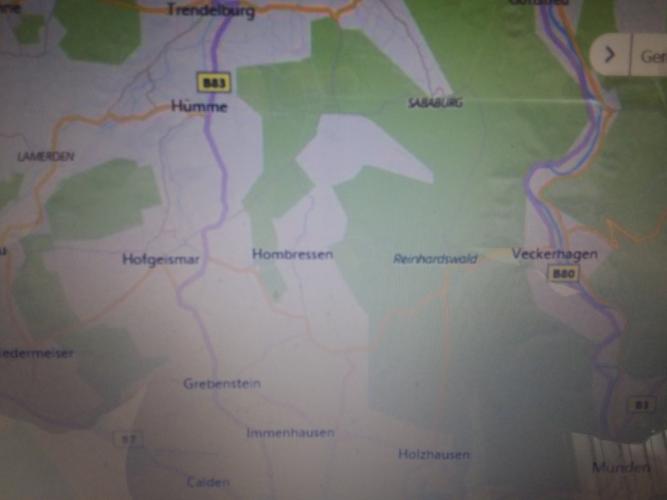
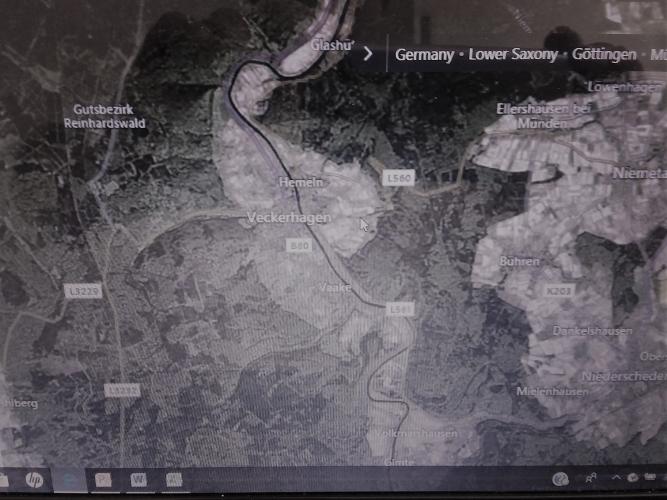

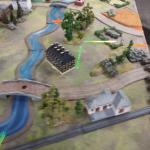
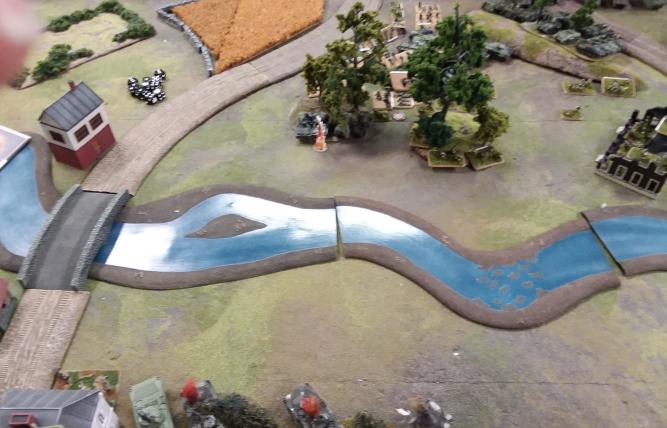

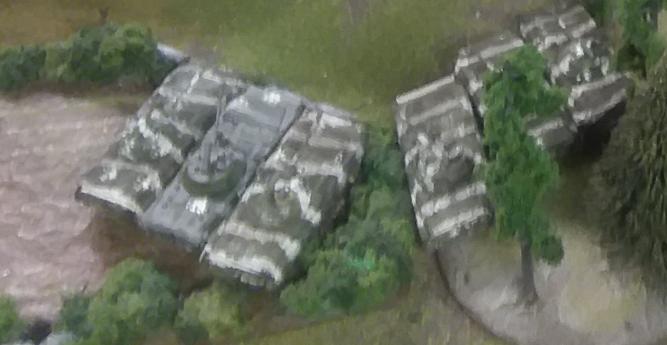
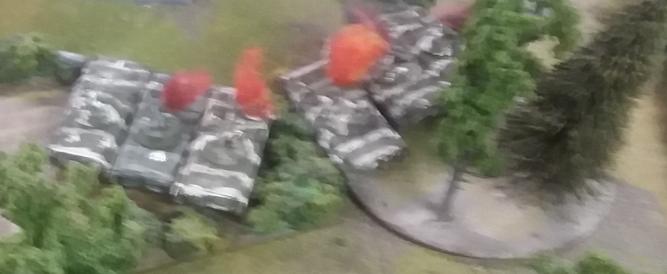


Congrats on the win. Enjoyed the videos.
What’s wrong with cold biscuit anyway!?! Commended.
Congrats on the battle.
Congrats on the win. Love the maps. Solid report.
Thanks to my appalling picture taking skills, the setup complete picture didn’t come out (again, the delay between my finger tapping the button and the camera in my phone deciding to click) The montage gallery with two pictures in it are two views of different aspects of setup
Good to see you’re getting games at your store. Would it be possible to get a picture of the battle setup? It helps understand where everything is at the start. Thanks.
certainly comprehensive with ok pictures thanks
congrats on the win